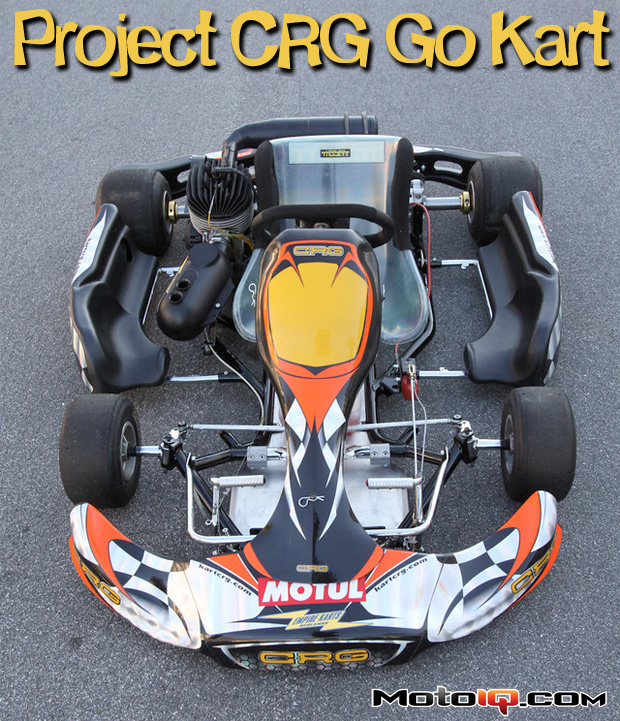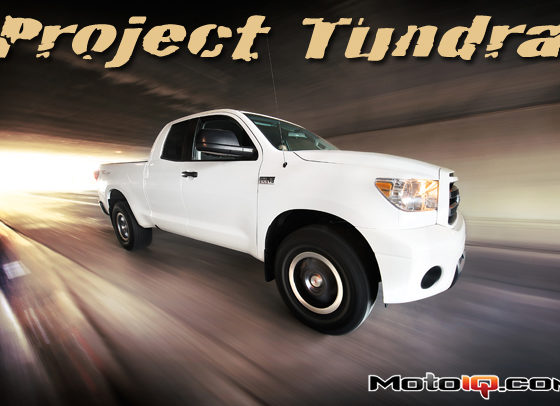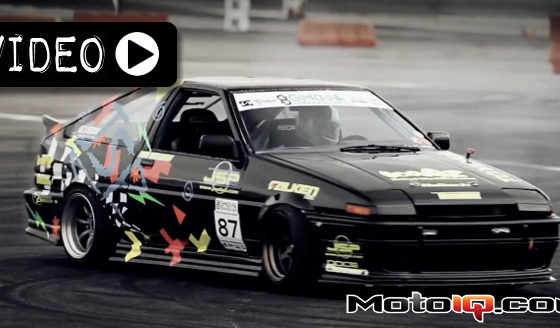,
 |
| The steering linkage can be adjusted for Ackerman and steering quickness from the steering column. A blade type torsion bar helps tune the chassis like an antiswaybar. If set straight up and down for maximum stiffness, the front has the most grip. When set horizontally it is the softest for the most understeer. Soft also helps chassis compliance to reduce tire shock and help the tires find grip. The bar can be set with the bolt loose or even removed for maximum softness. |
We decided to give the kart a shakedown run and brought it to Cal Speedway for a test. Amazingly the kart ran hard and handled nicely. We were able to give a lot of karts the business with this old beat up rusty pile. Dai Yoshihara took it out and proceeded to dust off all but a few fast shifter karts on the track! Unfortunately the old rusty chain soon flew off taking the worn sprockets and sprocket carrier out with it. However the CRG had proved its worth and we decided to rebuild it. We like how the kart was light and nimble; these characteristics made it more fun to drive than our newer more powerful but heavy and expensive late model high tech TAG kart.
 |
| The rear of the chassis also has a torsion bar. Most drivers under 180 lbs remove it completely but for heavier drivers it can help find more traction. The amount and stiffness of the seat stays also affects chassis tuning. |
Returning to the palatial MotoIQ garage, we stripped down the kart to a bare chassis. The chassis was straight so we sent it off to Embee Performance to be blasted clean and powder coated black, its OEM color. The axle bearing retainers and torsion bar clamps were machined from magnesium billet and were heavily corroded so we sent those to Embee to be bead blasted and clear powder coated. Embee also blasted and thermal coated our rusty and crusty expansion chamber in satin black.
 |
| The front spindle is adjustable for toe, caster, camber, Ackerman angle, ride height and track width. All of these have a big effect on how the kart turns as it affects rear wheel lift and weight transfer. |
The rear axle was slightly out of true and rusted solidly to the bearings. Some liquid wrench, heat and careful dead blow hammering broke it loose. We took the axle to Technosqaure and used their hydraulic press to straighten the axle and polished it on their lathe to ease assembly. After some diligent cleaning in the solvent tank, we were surprised to find the axle bearings serviceable. We honed the bearing’s ID to remove rust to ease assembly and repacked them with Motul synthetic grease and set them aside. The front bumper and torsion bars were polished which removed the rust as were the tie rods and steering shaft.
 |
| The rear is adjustable for ride height, axle stiffness, third bearing support stiffness and track width. This all makes a big difference in handling. The CRG uses a 40mm rear axle. Usually kid karts run 25mm axles, Cadets run 30mm axles, Senior 100cc karts run 40mm axles and 125cc TAG and Shifter karts run 50mm axles. The axle diameter affects stiffness and weight transfer. More magnesium axle carriers and Baller Bolts stainless goodness. |





2 comments
Having restored several Karts over the years, I did enjoy reading about your project and the end result looks great. However, one issue jumped out as I was reading and that is; “Ayrton Senna won a world championship in a similar machine.” Surprisingly, Senna never won a World Championship in Karting. A more appropriate statement would be “World Champion Ayrton Senna competed in a similar machine”
You are right! He was the South American champion many times but only a runner up in the world championships, 2nd twice and 4th twice.